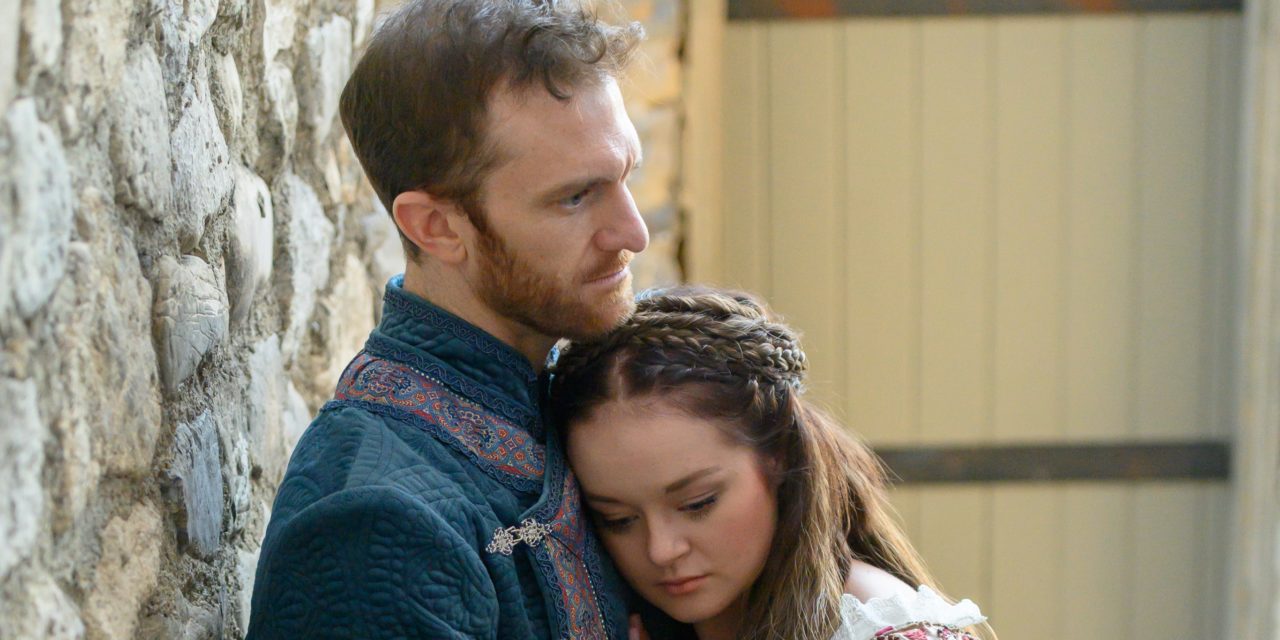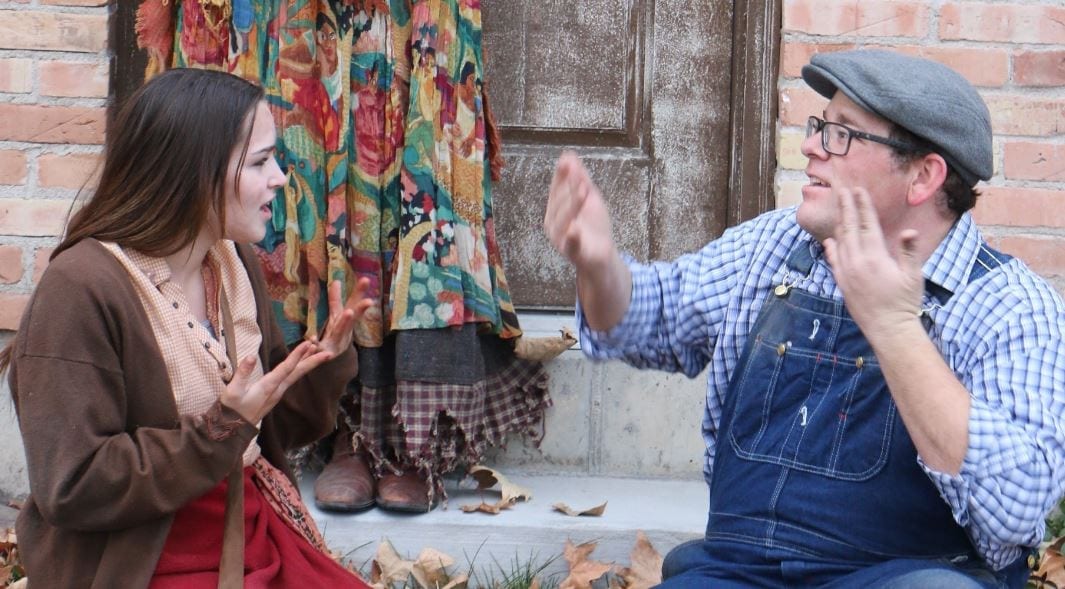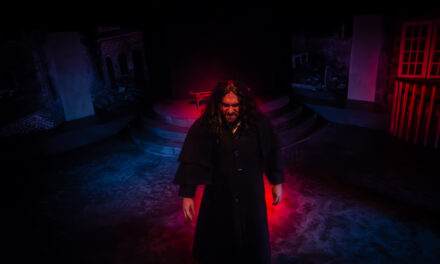OREM — In the title song of Camelot, King Arthur sings, “In short, there’s simply not a more congenial spot for happily-ever-aftering than here in Camelot.” He might as well have been singing about the current production of the show at Hale Center Theater Orem, which is the most successful production of Camelot I have seen.

Show closes June 4, 2022.
Camelot is a musical adaptation of the T. H. White novel The Once and Future King. With lyrics by Alan Jay Lerner and music by Frederick Loewe, the play tells the story of the rise and fall of King Arthur’s kingdom, Camelot. HCTO has chosen to mount a slimmed down version of Camelot with a revised script by David Lee. This version of the script cuts the fat from Lerner’s original book and yet preserves the script’s story, outline, sentimentality, and message. Nothing important is lost as the story moves briskly from scene to scene. The slimmed down script has the benefit of requiring only nine actors, which makes the epic story fit into the small HCTO space perfectly.
Rodger Sorenson‘s directing is flawless. Sorenson had me engrossed in every scene, whether in the flirty ending of “Camelot” or the mounting tension of the jousting match. I especially appreciated how he often had the ensemble members watch the play when they were not performing, which blurred the line between performers and audience. This suggests that the characters’ predicaments have relevance to modern people. Sorenson also used the large ramp (taking up one-third of the width of the thrust portion of the stage) extremely well. It served as a natural corridor pulling actors to the main upstage area efficiently, while also forming a helpful barrier between stage left and stage right when actors needed to show they were in separate locations or moving to a new place.

Rex Kocherhans as King Arthur. Photo by Suzy O Photography.
Camelot stars Rex Kocherhans as King Arthur. In the first act, Kocherhans captures the uncertainty plaguing Arthur, who was thrust unexpectedly into kingship. As the play progresses, Arthur grows closer to Kocherhans’s age, and the actor matures the character, making it easy to believe I was watching a wise, visionary ruler. But this is a musical, not an act-ical, and so what matters most is the singing. Kocherhans has that perfected with a voice that effortlessly handles the score and gives depth and passion to the lyrics of “How to Handle a Woman,” “Camelot,” and other classic songs.
As Guenevere, Meg Flinders is effervescent in every scene. Flinders brings vibrancy and joy to all her songs, especially “The Lusty Month of May,” “Take Me to the Fair,” and “What Do the Simple Folk Do?” Flinders has the deepest performance in the cast; in the second act, Flinders shows Guenevere as a woman torn between the lofty rules of chivalry and her feelings for Lancelot. Guenevere’s pivotal second act meeting with Lancelot is a compelling mix of romantic attraction and nervousness about being caught.
Bronson Dameron is a wonderful Lancelot. The character’s high self-regard in “C’est Moi” comes off as comical (not snooty), and he lacks the holier-than-thou attitude I have seen previous productions. Instead, Dameron’s Lancelot is profoundly human, as he strives to live up to his ideals and later fails. The idealism Lancelot shares with Arthur makes their fast, deep friendship believable — and heightens his betrayal in the second act. Finally, Dameron’s performance of “If Ever I Would Leave You” is driven by profound feeling and does full justice to the song.

Bronson Dameron as Lancelot and Meg Flinders as Guenevere. Photo by Suzy O Photography.
The remaining six actors are impressive. Jordan Briggs is a roguish Mordred who takes delight in stirring up trouble in the idyllic Camelot, and his leadership in “Fie of Goodness” made the song the most rousing number of the evening. (It is a shame that Lee’s revised version of the script, like the original, does not introduce the character until Act II). David Mitchell played Sir Lionel and had a marvelous death scene in the jousting match. Mitchell, along with the other two featured knights (Jeff Sundwall as Sir Sagramore and Connor Stuart McMaster as Sir Dinadan) were marvelous in their musical numbers, culminating in a triumphal performance in “Guenevere.” Music director Amanda Crabb‘s work with this cast is so good that I wish this cast were recording a cast album.
The visual elements of HCTO’s Camelot are a delight. Set designer Jason Baldwin created my favorite set I have seen at HCTO. No detail was omitted, including the pointed arches in each doorway and the incredibly realistic painted stonework on the upstage wall and stage floor. MaryAnn Hill‘s costume designs were gorgeous. Every actor wore layer upon layer of richly detailed clothing that exuded luxury and medieval chic. Guenevere wore long, flowing dresses that were trimmed elegantly in so many ways, including with fur for her first scene and sparkling jewels on her red and buff dress. Lancelot’s most stellar costume piece was a blue tunic that had a subtle circular pattern and lovely decorative strips with a pattern reminiscent of a Celtic knot. Mordred’s black and grey pieces were all textured in different ways, giving the character variety in his appearance, despite being dominated by one color palette in a way no one else on stage was.
With strong performances, superb singing, impeccable direction, and sumptuous visuals, HCTO’s Camelot is a great way to spend an evening happily-ever-aftering. But like the legendary Camelot, this production will not last forever, and I urge readers to get their tickets as soon as they can.

This review was supported by a generous grant from the Orem CARE program.





